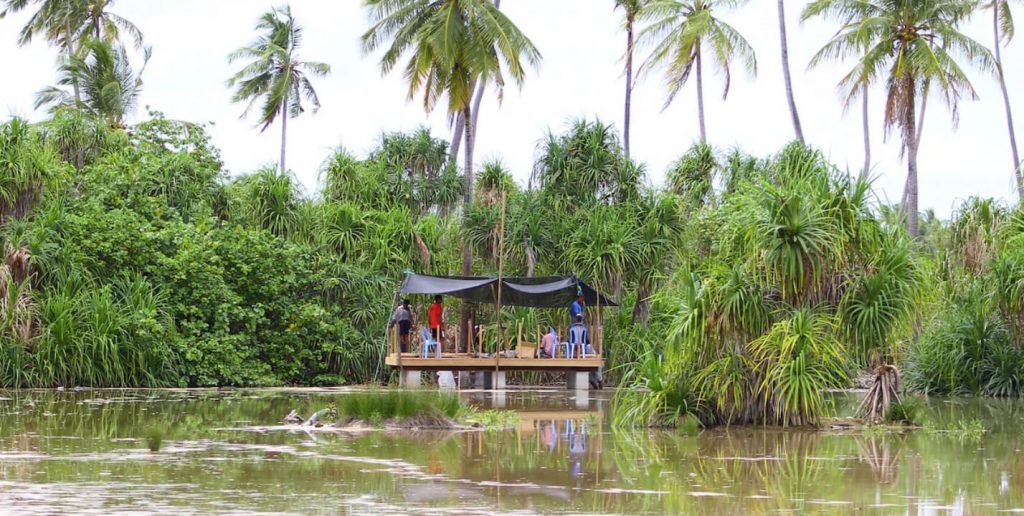The research for this post was made possible by the collaboration of IDEAS with Mangroves For the Future (MFF) project and UNDP Maldives.
According to the locals, Nadella used to have a mangrove area that was reclaimed for the construction of the harbor. In the absence of a living mangrove area, our team instead surveyed a large wetland area with a muddy bottom. We felt that despite there being no mangroves, the incredible biodiversity and natural processes present there needed to be documented.
The wetland area/kulhi is called Gonaanigili Kulhiya. according to the locals, reed (haa/hau) used to be grown there. These local materials are used for traditional mat weaving. Today, there are very few reeds present in the area.
The wetland area consists of a large fresh water body with clean and drinkable water. The main types of trees found there are kashikeyo (Pandanus odoratissimus) and dhiggaa (Hibiscus tiliaceus L.). During our trip there, we were able to spot many kinds of birds including maakana (Grey Herons, Adrdea cinerea – rectirostris), huvadhoo raabon’dhi (Maldivian Pond Herons, Adreola gray – phillipsi) and kan’bili (Maldivian Water Hen, Armaurornis phoenicurus).
This is an area where the effects of iruvai moosun (north-east monsoon) and hulhungangu moosun (south-west monsoon) are very apparent. During the rainy south-west monsoon, flood waters are very common in Nadella, and the water makes its way to the wetland area which acts as a reservoir.
In contrast, the dry north-east monsoon causes the water to dry out, exposing the mud layer below. The water table in this area is fairly shallow, only at 0.5 ft blow the natural ground level!


From our observations, we drew two main conclusions – 1. this beautiful natural wetland area can be developed into a natural park area for locals and visitors to enjoy and appreciate its beauty, and 2. the common occurrence of floodwaters during stormy weather calls for a proper storm water control system for Gdh. Nadella.
And that concludes our trip to Gdh. Nadella. Join us on our State of the Mangroves trip further up north next time!





